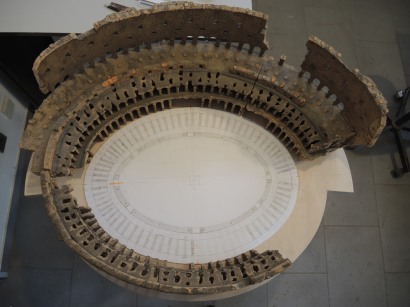…at the Lindenau – Museum by Victoria Kubale
The Lindenau Museum in Altenburg, named after the 19th century statesman, astronomer and art collector Bernhard August von Lindenau (1779-1854), houses a vast collection of paintings from the 13th century to the present, graphic works, sculpture, a historical library, antiquities, plaster casts and miniature models of ancient architecture.
Lindenau, who was acquainted with Johann Wolfgang von Goethe and Alexander von Humboldt, founded the museum after traveling Italy and France where he purchased a considerable number of artworks. In order to present the objects in an appropriate way he initiated the construction of a new building at his residence in Altenburg, the “Pohlhof”. The museum opened its doors on april 1st in 1848.
Until 1854, the year of his death, Lindenau extended his collections with further purchases. Eventually, the rooms of the building at the Pohlhof became too confined, so that a new one was built in 1874 at the behest of the duchy of Saxe-Altenburg on the edge of the park of the residence castle Altenburg. The building represents a certain architectural type of Pinacotheca or “Gemäldegalerie”, which was created by Leo von Klenze with the Alte Pinakothek in Munich.
In the 20th and 21th century the museum laid a focus on the acquisition of modern and contemporary art, especially graphic works. Today it houses the most comprehensive collection of works of Gerhard Altenbourg (1926-1989) worldwide.
However, the collections of Lindenau, which focused on Ancient Greece and the early Italian Renaissance, still remain the heart of the museum. They comprise 180 Italian panel paintings (of Sandro Botticelli, Fra Angelico, Massaccio, Luca Signorelli, Pietro Perugino and Guido da Siena), about 400 Greek and Etruscan vases, 150 plaster casts of ancient Greek to neoclassical sculpture as well as an art library and models of ancient architecture made of cork, bronze and terracotta.
Modeling small replicas of historical buildings of cork (phelloplasty) has its origins in the late 16th century nativity scene sculpture. It evolved into an independent (art) genre and became a common handicraft in Italy in the 18th century, when more and more erudite travelers and affluent Europeans with an interest in classical antiquity visited Rome and increased the demand for antiquities and souvenirs. The selection of displayed architecture comprised several temples, theaters, triumphal archs, sepulchral and infrastructural architecture and met the taste of this clientele. Because of its porous look, its color and easy processing cork was an ideal material to represent the reverent but fading splendor of ancient architecture.
But Lindenau was not looking for a nice souvenir. He intended to use the models as a substitute for studies in situ to “offer a visualization of the ancient Greek and Roman art of construction”1, thus for a pedagogical purpose. During his stay in Italy in 1843 he socialized with Emil Braun, classical archaeologist and secretary to the German Archaeological Institute in Rome. Between 1845 and 1850 Braun ordered cork replicas from the Roman modeler Luigi Carotti (Works et models of Cork, Rome, No. 13. Via del Boschetto 2. Floor) for Lindenau.
The Carotti models consist of the Colosseum (amphitheatrum flavium), the Temple of Mars Ultor and three Greek temples in Paestum: the archaic first Temple of Hera (also called “the Basilica”), the second Temple of Hera (so-called Temple of Poseidon), which dates back to 450 BC, and the late archaic Temple of Athena. Besides, the museum’s model of the Temple of Antoninus Pius and Faustina, which is a permanent loan to the residence castle Altenburg, was probably also crafted by Carotti. All of them are in an intact condition.
The model of the Colosseum was commissioned in 1845 by Emil Braun to Luigi Carotti. The agreed price was 50 Scudi. But shortly after Carotti started work, a shortage of cork occurred, so that the completion of the model was delayed. Braun did not only manage to procure the urgently required material in 1847, but also to convince Carotti to complete the protracted and tedious work on the model after he intended to reject the order.2 The small-scale Colosseum finally arrived in 1850 at the Pohlhof.
The model has a height of 32.5 cm, a longitudinal axis of 100 cm and a transverse axis of 72 cm. Hence, it displays the Colosseum in a scale of 1 to 185, but the proportions of the original, which is less elongated, were not fully observed. The interior features two tiers of the same size. Apart from that, Carotti refrained a reconstruction of the interior space. Nevertheless, the model captivates the beholder with its detailed design of the architectural decoration such as the half-columns of the Tuscan, Ionic and Corinthian orders on the outer facade. Thanks to the restoration by Dieter Cöllen in 2017, the model is in a good condition today.
Besides the models of Carotti the Lindenau Museum owns five cork miniatures of the first German cork carver Carl May (1747-1822), which were crafted in Erfurt or Aschaffenburg around 1800. These include the Pyramid of Cestius, the Grotto of Egeria, the Porticus Octaviae, the “Temple of the Cough” (Tempio della Tosse) and the Temple of Minerva Medica.
In Naples Emil Braun purchased two Sicilian temples from an unknown modeler for Lindenau: the temple in Segesta and the so-called Temple of Concordia in Agrigento. In addition, there are three more models in the museum which Braun acquired in Rome. These are the Basilica of Maxentius and Constantine, the Pantheon and the Arch of Drusus made of tuff.
Except for Luigi Carotti and Carl May three other Italian small-scale architects have to be mentioned: the famous Antonio Chichi (1743-1816), who also crafted a model of the amphitheatrum flavium (now in the Wilhelmshöhe Palace in Kassel), Augusto Rosa (1738-1784) and Giovanni Altieri (attested 1767-1790). They beared the job title “architetto”, which indicates that they were conversant with the art of construction in general. As a source of inspiration they used large-scale views of ancient architecture of the engraver Giovanni Battista Piranesi.3
The Lindenau Museum houses also a collection of bronze models. Their provenance is not conclusively clarified yet, but there were certainly crafted in 19th century Italy. They represent the so-called Temple of Vesta, the Temple of Saturn, the Temple of Vespasian and Titus, the Columns of Phocas, Trajan and Marcus Aurelius, the equestrian statue of Marcus Aurelius as well as two different sized models of the Lateran Obelisk and three further Roman columns made of decorative stone.
The Temple of Castor and Pollux, which is made of terracotta, was produced in the Thonwaaren-Fabrik Franz Naumann in the second half of the 19th century. The Choragic Monument of Lysicrates and other architectural elements like a part of the second Temple of Hera in Paestum were also made by this manufacturer. Under the direction of Dr. Martin Boss archaeology students of the University of Erlangen restored the terracotta models in the early 2000s.
Today, the cork model of the Colosseum is one of the most frequently lent art work of the Lindenau Museum. It went on a journey from Altenburg to Erlangen (“Nur ein Souvenir?”, Stadtmuseum Erlangen, 1997), Munich (Internationale Handwerksmesse 2003, “Architektur+Sport. Vom antiken Stadion zur modernen Arena”, Entrepreneurial University, 2006), Würzburg (“Freunde, ich habe einen Tag verloren. Rom zur Zeit des Kaisers Titus”, Martin von Wagner-Museum of the University of Würzburg, 2007), Basel (“Von Harmonie und Maß”, Skulpturenhalle, 2009), Saarbrücken (“Grand Tour. Reisen zu antiken Stätten”, Museum für Vor- und Frühgeschichte and Saarlandmuseum – Alte Sammlung, 2017) and Fribourg, where it can be currently seen in the exhibition “ROMA! Gravures de la collection Clemens Krause” of the Musée d’Art et d’Histoire.
1 „[…] eine Anschauung der Bauweise der Griechen und Römer zu eröffnen, […].“ J. G. Quandt, H. W. Schulz, Beschreibung der im neuen Mittelgebäude des Pohlhofs befindlichen Kunst-Gegenstände, Altenburg 1848, p.87.
2 “Endlich ist auch das Colosseum in voller Arbeit. Ich habe viele Noth darum gehabt. Zuletzt wollte der Verfertiger nicht mehr Contract halten und die Arbeit ganz zurückweisen. Einige Scudi für den Kork habe ich zulegen müssen. Ich werde sie Ew. Exc. an etwas anderem zu ersparen suchen.“, excerpt from a letter from E. Braun to B. v. Lindenau dated 11/30/1847.
3 S. Reim, Bernard August von Lindenaus Korkmodelle, in: Palmyra. Zerstörte Erinnerung, Altenburg 2017, 43-46, p. 44.



















































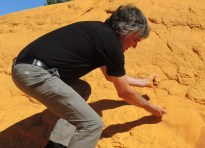





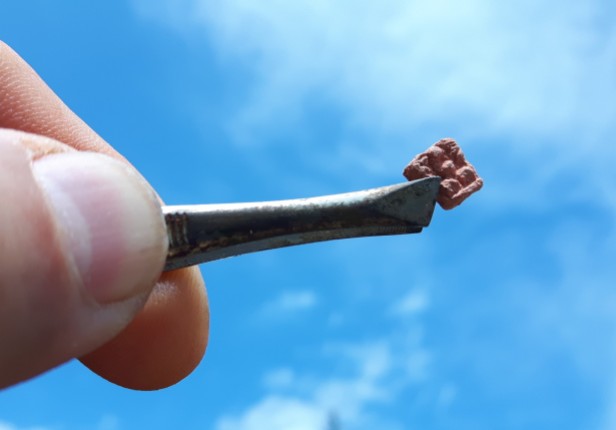









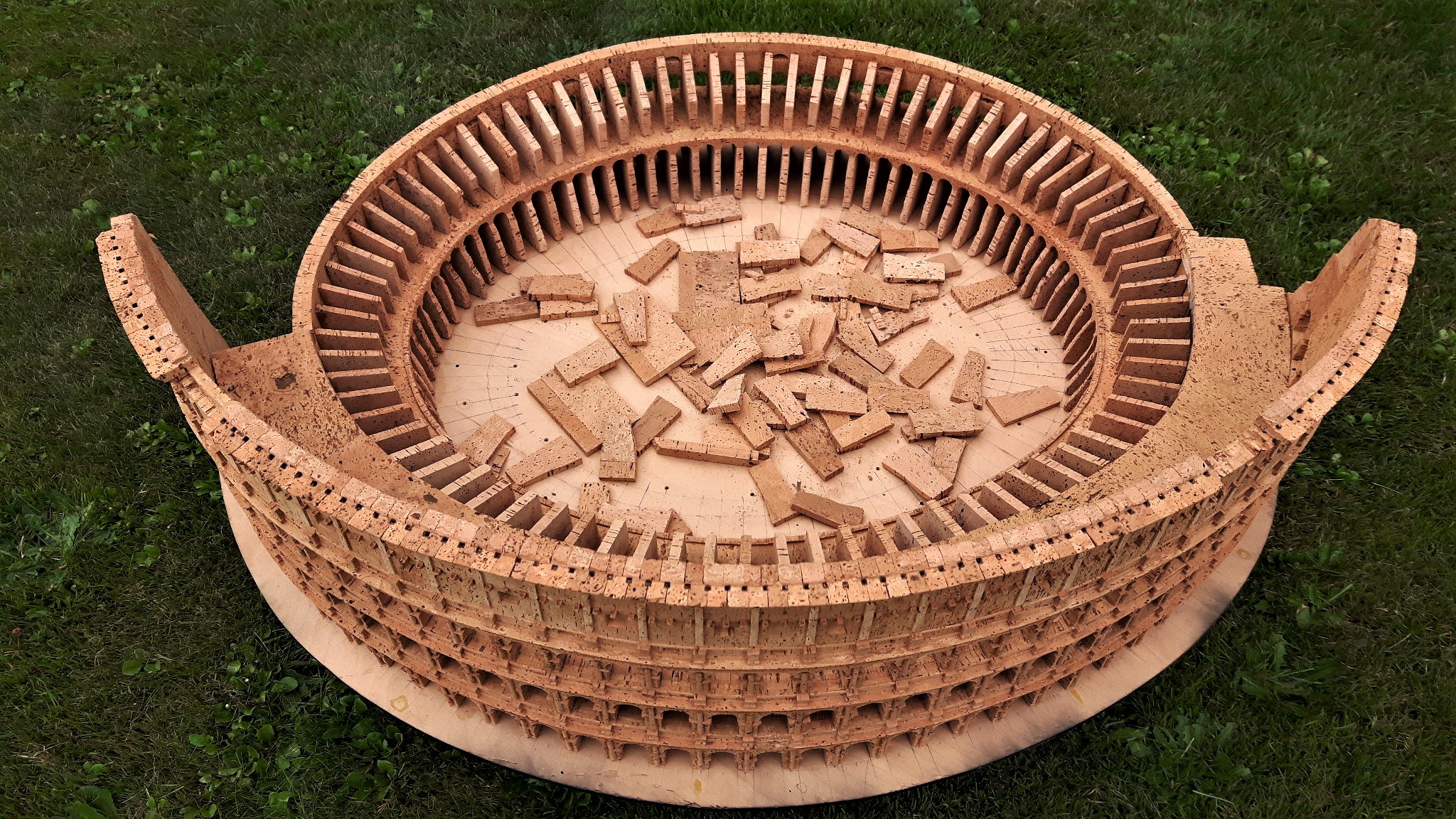



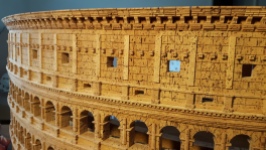



























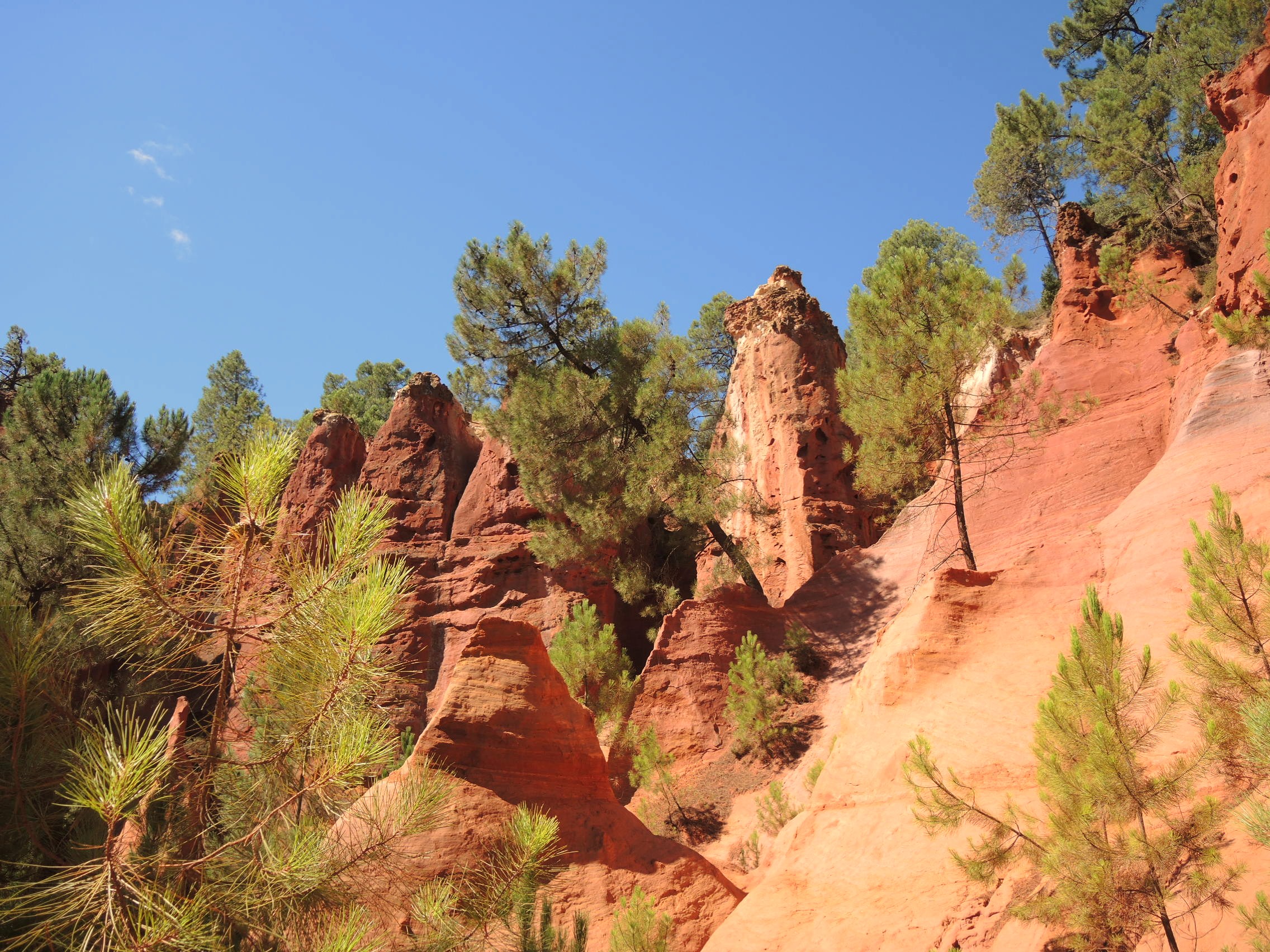


































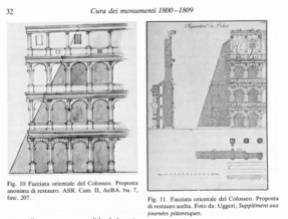


 .
.











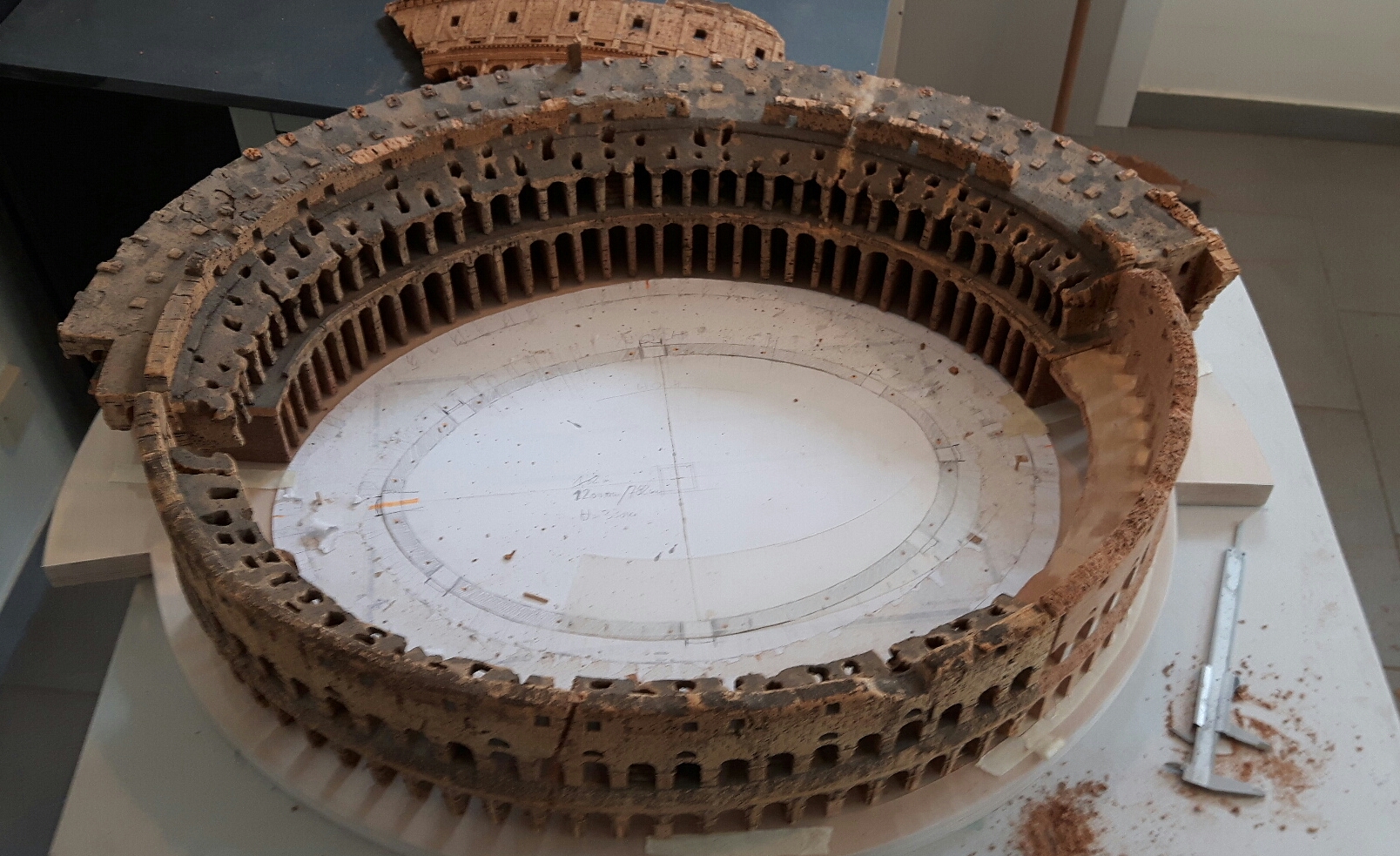


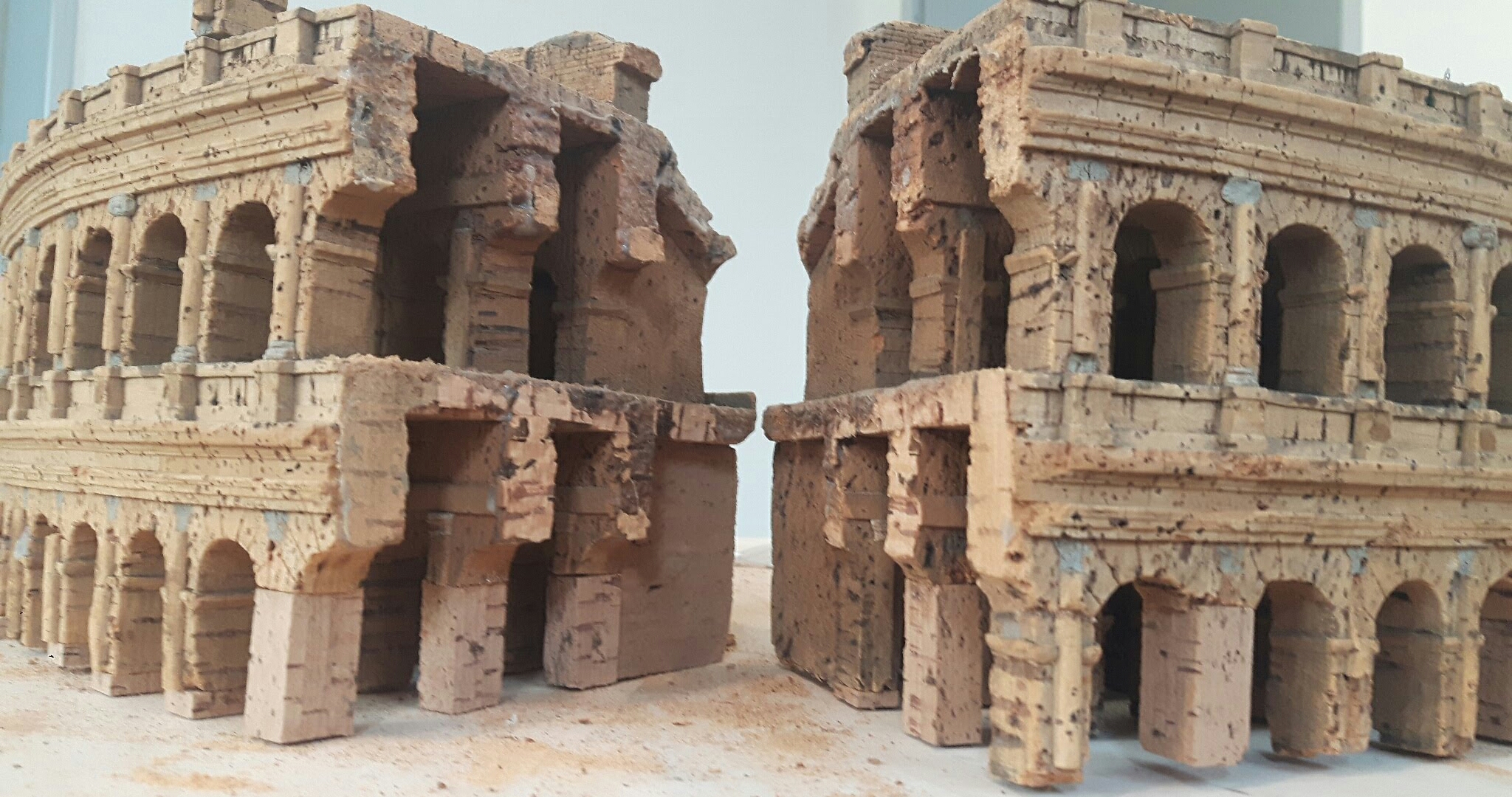


 During the centuries the model was badly treated and broken parts where fitted incorrectly with the wrong glue. Dieter has to cut through the whole structure and work like a surgeon to stabilize the fragile cork and heal the wounded sections…
During the centuries the model was badly treated and broken parts where fitted incorrectly with the wrong glue. Dieter has to cut through the whole structure and work like a surgeon to stabilize the fragile cork and heal the wounded sections…




